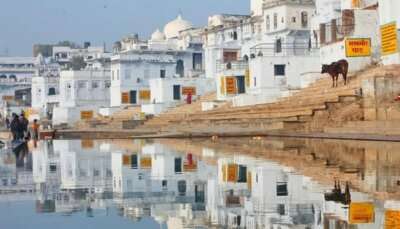Shree Mahalaxmi Temple Is A Must Visit Pilgrimage In Goa In 2025
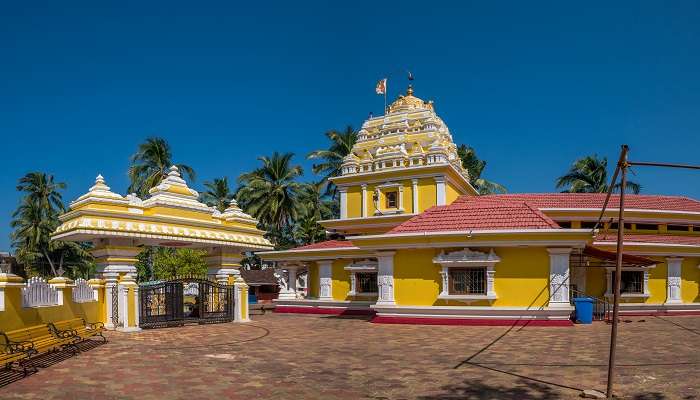
Shree Mahalaxmi Temple is located at Bandora, 4 km from Ponda, Goa which is a temple of Goddess Mahalakshmi.The deity worshipped in the temple is a beautiful statue of the goddess carrying a lingam on her head, which is recognized as a Satvik (nonviolent) manifestation of the goddess. Notably, the four arms of her idol hold four objects: a club, a dagger, a vessel containing flowers, and a sickle. The region’s Silahara rulers and the Kadamba Kings also revered the Hindu deity. This temple was built in 1866 after the Portuguese demolished the initial pavilion, and this temple is the best example of the Konkani Temple architectural style.
History Of The Temple
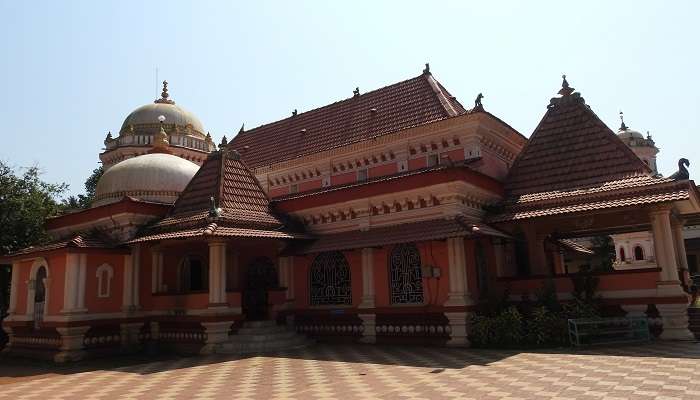
This temple was constructed early in the 19th century and was initially built to worship the goddess Shri Mahalaxmi. Besides the presiding deity, the daily rituals are also offered to Shree Mahalaxmi with other deities of Shree Narayan Purushram, Shree Narayan Dev, Shree Rawalnath and Shree Baleshwar. The deity presiding over this temple is considered to be the possessor of power and energy.
As per folk mythology, Shri Mahalaxmi appeared on this earth while the competing forces of the Hindu pantheon, demons and gods, fought each other after churning the ocean to procure ‘Amrit’- the elixir of life. The temple symbolised potential harmony between the local Hindu community and their rulers during Portuguese colonialism. This peaceful coexistence created the perfect environment for reverse acculturation, which defines Goa’s culture today.
Must Read: Places To Visit In North Goa
Festivals Celebrated And Timings Of Shree Mahalaxmi Temple
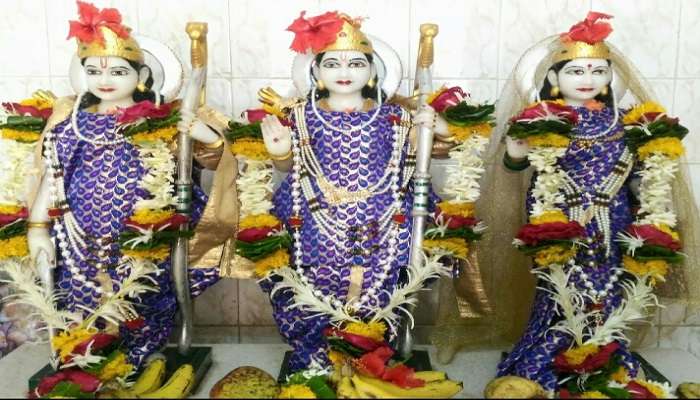
Ram Navami is the principal festival observed in the temple; however, the second goddess, Mahalakshmi, is taken out on processions in a palanquin known as palkhi in the regional language during this occasion. On the second day of the festival, both the idols are taken out on the street in a more elaborate procession than on the first day. The next festival celebrated in the temple is the Mahashivratri festival. In this festival, the central procession of the idol of Goddess Mahalakshmi is from one place to another on the shoulders of the devotees.
Popular as Shree Sansthan Mahalaxmi, Mahalaxmi Temple is open throughout the week, from morning 6 AM to evening 8:30 PM. There are no charges to get inside the temple. However, donations are accepted. For the people who want to attend poojas or ceremonial worship, the timings are 7 AM to 11:30 AM in the morning, noon worship at noon and evening worship at 8 PM.
Top Attractions Near Shree Mahalaxmi Temple
Here is the curated list of attractions to visit near the Shree Mahalaxmi Temple:
1. Siddhagiri Museum
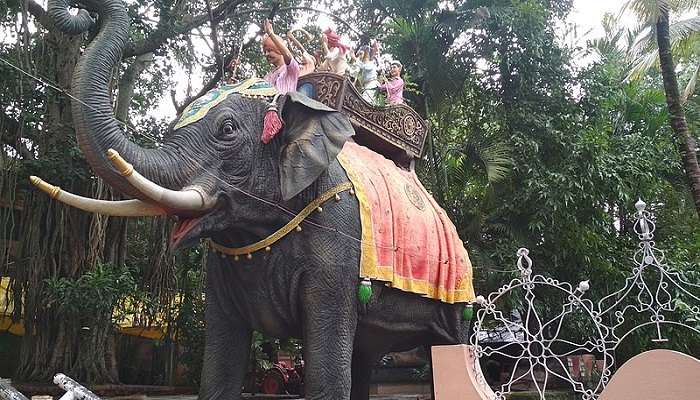
Using wax cement statues, the museum portrays the lifestyle of the people of Maharashtra, who were living a civilized and self-sufficient life in the villages before the raid of the Mughals. Mahatma Gandhi visualized this and has been executed by the Siddhagiri Gurukul Foundation, a charitable trust. The museum has an old Shiva temple on its premises. The temple comprises a 125-feet deep well, a 42-feet tall Shiva statue and a giant Nandi statue. If you are a tourist, then for your meal, you can find restaurants within the compound of the museum that serves good quality food. For children, there is a gorgeous playground that includes mini-train services.
Location: Kolhapur, Maharashtra 416013
Distance from Shree Mahalaxmi Temple: 196 km
Suggested Read: Temples In Goa
2. Radhanagari Dam
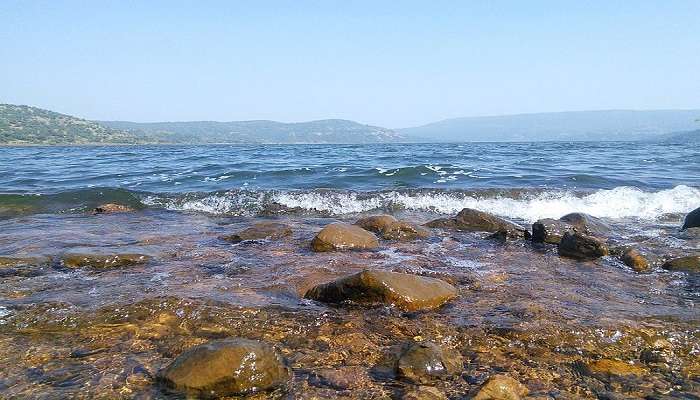
Radhanagari Dam was constructed by Shahuji Maharaj, the ruler of Kolhapur, and the dam extends across an area of 1,1000 hectares of land. The dam has been built to support water sources for agricultural activities and energy. About 10 MW of electricity is produced each year in the hydroelectric project. The area around the dam is considered the most significant nesting ground for some of the most elusive and beautiful birds. The dam is built at a magnificent abode, so scenically positioned with a superb thick forest background of many birds and different plant species. Although one can visit the dam all year round, the most spectacular part to watch is the monsoon season when the green colours form a picture like an emerald. During this time, tourists can enjoy the exotic scenery, including the waterfalls made from the overflowing water of the dam.
Location: 416212, Olavan, Maharashtra
Distance from Shree Mahalaxmi Temple: 166 km
3. Rankala Lake
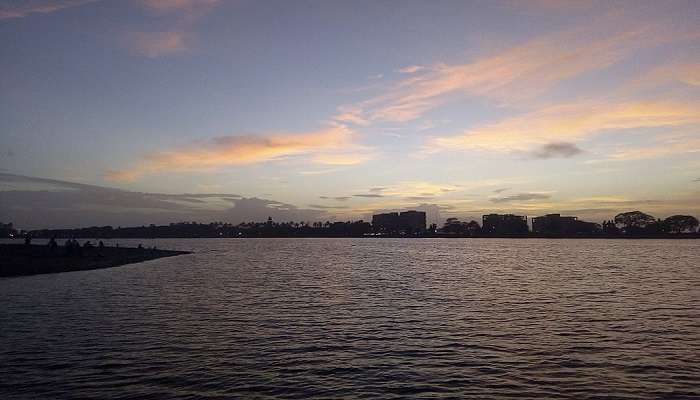
The Rankala Lake was built by the Maharajah of Kolhapur in the late 19th century by ShriShahuChhatrapati. It is supposed to have a direct connection with a water spring present in Panhala Fort, which ChatrapatiShivajiMaharaj is believed to have crossed. Some people assume that before the 8th century AD, this place was just a place where stones were collected, and after the earthquake in the 9th century AD, a natural process converted this place into a site where water began to collect and form a lake. This large lake is named after the God Rank Bhairav Temple with the story that Mahalaxmi used to favour him, and there is still a golden temple submerged in the waters of this lake.
Location: Hari Om Nagar, Kolhapur, Maharashtra 416012
Distance from Shree Mahalaxmi Temple: 186 km
Suggested Read: Ashwem Beach
How To Reach Shree Mahalaxmi Temple

By Air: If you are coming through Manohar International Airport in Mopa, it will take 1.5 hours to cover the 60 Km to get to the temple. Dabolim Airport is 34 kilometers away, and it takes one hour to get there.
By Train: This particular temple is approximately 22 km away from the nearest railway station, Madgaon Railway Station. It will take approximately 45 minutes to get to Shree Mahalaxmi Temple from there.
By Bus: The nearest bus stand to Shri Mahalaxmi Temple is Ponda KTC Bus Stand, which is approximately 3 km away and a 7-minute drive. Most of the outstation buses stop at Ponda.
Further Read: Rankala Lake
Get a spiritual experience in Goa. Explore the spirituality of an architectural marvel and a top religious destination, Shree Mahalaxmi Temple, in its lively state. From the exterior and interior structure, and opulent history, to the peaceful environment that greets any guest of the temple, anyone who wishes to find some spiritual calm or explore the richness of India’s culture cannot afford to miss the temple. Book your trip to Goa now and feast your eyes on the religious importance of Shree Mahalaxmi Temple.
For our editorial codes of conduct and copyright disclaimer, please click here.
Cover Image Source: Shutterstock
Frequently Asked Questions About Shree Mahalaxmi Temple
What specific structures can one notice in Shree Mahalaxmi Temple?
The temple shows the typical attributes of Goan cultural architecture with a perfect mix of Hindu and Portuguese architecture. Some of the characteristics are a large entrance, a large open central court and ornamented wooden columns.
What's the ideal time to visit Shree Mahalaxmi Temple?
The best time to visit Shree Mahalaxmi Temple is from November through February. But if you're into cultural immersion, you might want to plan your visit around festivals like Navratri or Chaitra Purnima.
What languages are spoken at the temple?
The main languages spoken at Shree Mahalaxmi Temple are Konkani and Marathi. But don't worry because Hindi and English are also commonly spoken around.
Can I shop for some spiritual goodies around the temple?
Oh, yes! There are a bunch of shops and stalls around the temple that sell all sorts of religious goodies like incense sticks, flowers, and coconuts to offer to the deity. Plus, they also have some souvenirs, statues, and books that'll give you insights into the place and Hindu stories.
How does the temple keep Goan culture alive?
Shree Mahalaxmi Temple keeps Goan culture strong by putting on cultural shows, festivals, and religious events that highlight the local traditions. They also promote traditional music, dance, and arts to make sure that Goan heritage and customs are passed down to coming generations. The temple also supports local artisans and craftsmen by giving them a platform to showcase their hard work.
People Also Read:
Hemakuta Hill Temple Banashankari Amma Temple Amareswara Temple

Innovative Content Writer Focused on Producing High quality, Original Content that drives traffic and engages readers. Experienced in Content strategy and analytics to measure content performance using tools such as SQL, Power BI, Excel.




